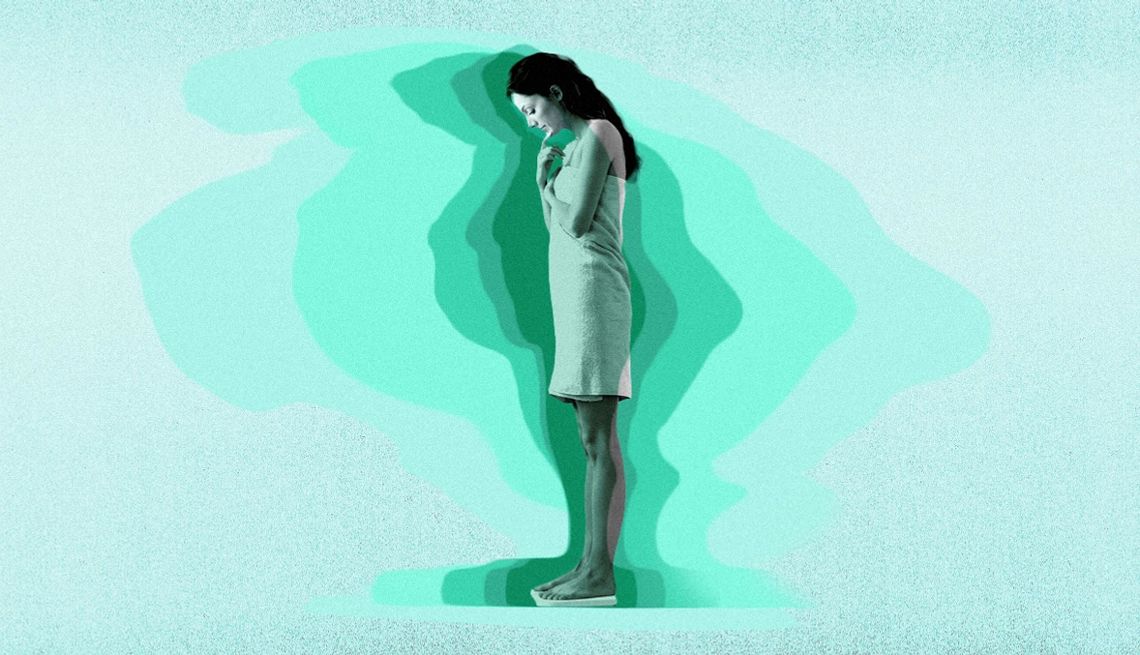
- Select a language for the TTS:
- UK English Female
- UK English Male
- US English Female
- US English Male
- Australian Female
- Australian Male
- Language selected: (auto detect) - EN
Play all audios:
GENES, ENVIRONMENT AND OTHER EATING DISORDER RISKS What’s known as “anorexia of aging,” a diminished appetite and/or reduced food intake among older people, is nothing new. Research
suggests this particular form of anorexia affects around 25 to 30 percent of older men and women, more commonly in nursing homes and hospitals. What experts are seeing now — the uptick in
eating disorders from middle-age on — is different. It has more in common with the disordered eating seen in younger people. Although research on what causes eating disorders to emerge or
re-emerge later in life is inconclusive, there’s plenty of evidence to suggest that genes play a significant role. If someone in your family has an eating disorder, that ups the likelihood
that you’ll develop one, too. One review of studies published in the _Journal of Preventive Medicine and Hygiene_ suggests genetic factors predispose 41 to 57 percent to binge eating
disorder, the most common type of disordered eating in older adults, especially among middle-aged men and women who struggle with their weight, says Tom Hildebrandt, director of the Eating
and Weight Disorders Program at Icahn School of Medicine at Mount Sinai. But genes don’t act alone; environment also plays a role. Pressure to diet, or weight loss related to a medical
condition or life stressor, can open the door to an eating disorder. And for someone who is genetically predisposed, losing even five to 10 pounds can be like an invitation to continue. For
some, the state of semi-starvation can then lead to binge eating, if not anorexia. Some doctors and researchers have expressed concern that people who take GLP-1 drugs (like Ozempic, Wegovy,
Mounjaro, Zepbound) may be at risk of developing an eating disorder for that very reason. These drugs — some of which are approved for diabetes, some for weight loss — have helped some
people shed 10 to 20 percent of their body weight. Although it’s too soon to know for certain, the thinking is that could compel someone to further limit how much they’re eating. EATING
DISORDERS LATER IN LIFE CAN BE RISKIER FOR YOUR HEALTH Eating disorders do a number on overall health no matter the age. But the physical toll is even greater on an aging body. “People with
a weakened immune system, bone structure, or cardiac function are particularly vulnerable to health complications associated with eating disorders,” says Erwin. Binge eating disorder is
also associated with heart disease, diabetes, and hypertension (high blood pressure), she adds, while anorexia nervosa can cause anemia, bone loss (osteoporosis), arrhythmia and heart
failure. Meanwhile, bulimia is associated with “significant dental problems and dangerous electrolyte imbalances,” says Erwin. There’s also a cumulative effect of living with an eating
disorder for many years. “The longer you suffer with an eating disorder, the greater the burden of symptom-related medical consequences,” says Hildebrandt. “This increases the risk and may
coincide with an erosion of resources, including access to care" and insurance-based treatment options.










